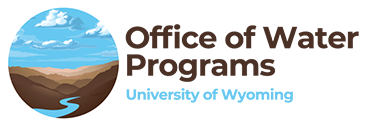Current WRP Projects: Project 60
Improving Hydrologic Predictions in Wyoming’s Headwaters Through Detailed Quantification of Snowmelt
- Project Number: 60
- PIs: Fabian Nippgen, Assistant Professor, UW Ecosystem Science and Management; Ginger Paige, Professor, UW Ecosystem Science and Management
- Period: July 2021 – June 2024
Abstract:
Mountains are often referred to as the water towers of the west. Located within the semi-arid land-scape of the Intermountain West, mountains are the only areas that maintain a positive water bal-ance and are hence a crucial part in sustaining societies not only in the immediate vicinity but ex-tending far downstream. Municipalities, agriculture, and industry all rely on water supplied by var-ious mountain ranges. However, areas and entire states-like Wyoming-that source most of their water from surface waters are especially vulnerable to fluctuations in water supply from the moun-tainous regions. Predicting streamflow from snow is crucial for allocating water resources and meeting compact obligations but has proven challenging due to the high degree of spatial and tem-poral variability of snow accumulation and melt. There is need for better understanding of how snow accumulates and melts in the mountains and how that melt water is be translated to water in the streams and rivers. Declining snowpacks in recent decades and spring snowmelt pulses that occur up to several weeks earlier compared to the middle of the previous century are aggravating the situation. We propose a multi-tiered approach to improve our ability to quantify snow accumu-lation, melt, and subsequent streamflow generation. We will use on-the-ground measurements of snow depth and snow water content of the snowpack and pair these observations with remote sensing imagery from drones at high spatial resolution and satellite imagery to better understand how watershed characteristics affect the spatial and temporal patterns of snow accumulation and melt. We will relate patterns of snow melt to runoff source areas and stream perennialty, that is, the duration a headwater stream has flowing water in it. We will parameterize a physically-based snow model with the results from the observations (both on the ground and remotely sensed) and use the improved inputs to make predictions about streamflow and water resources with a process-based hydrologic model optimized for water resources forecasting. The majority of the research will be conducted in the well-established area in the Snowy Range (North Platte tributary). This location has the advantage of being close to Laramie and already offers 10+ years of historic hydrologic and meteorologic data. With the insights gained from the Snowy Range, we aim to apply the water re-sources model at other basins in Wyoming, for example the Upper North Platte basin or the Tongue River basin. Our proposed research aims at improving current methods to monitor and predict water resources and runoff generated from snowmelt in Wyoming’s mountain ranges and can inform water resources management at the local and regional level.
Quick Links

